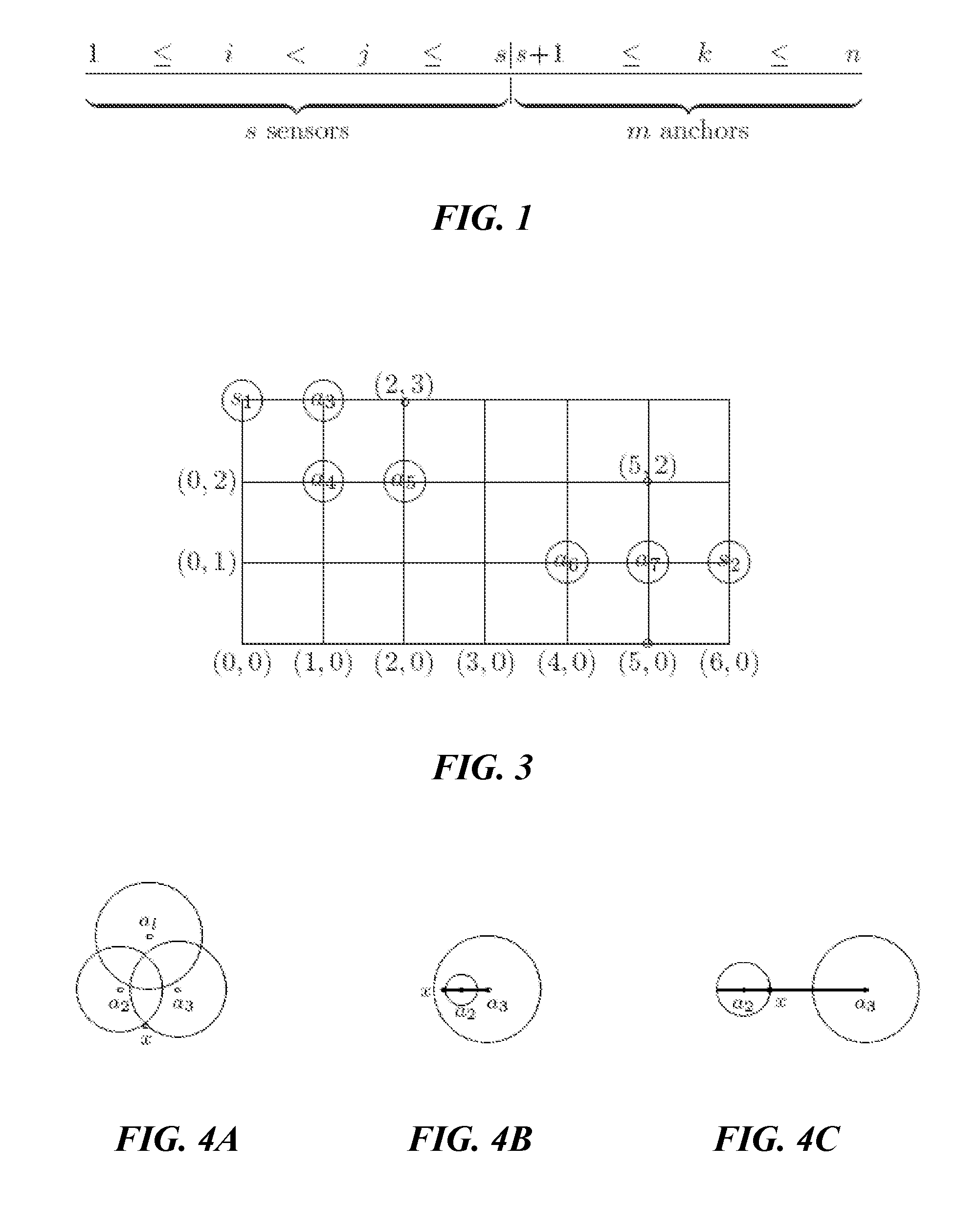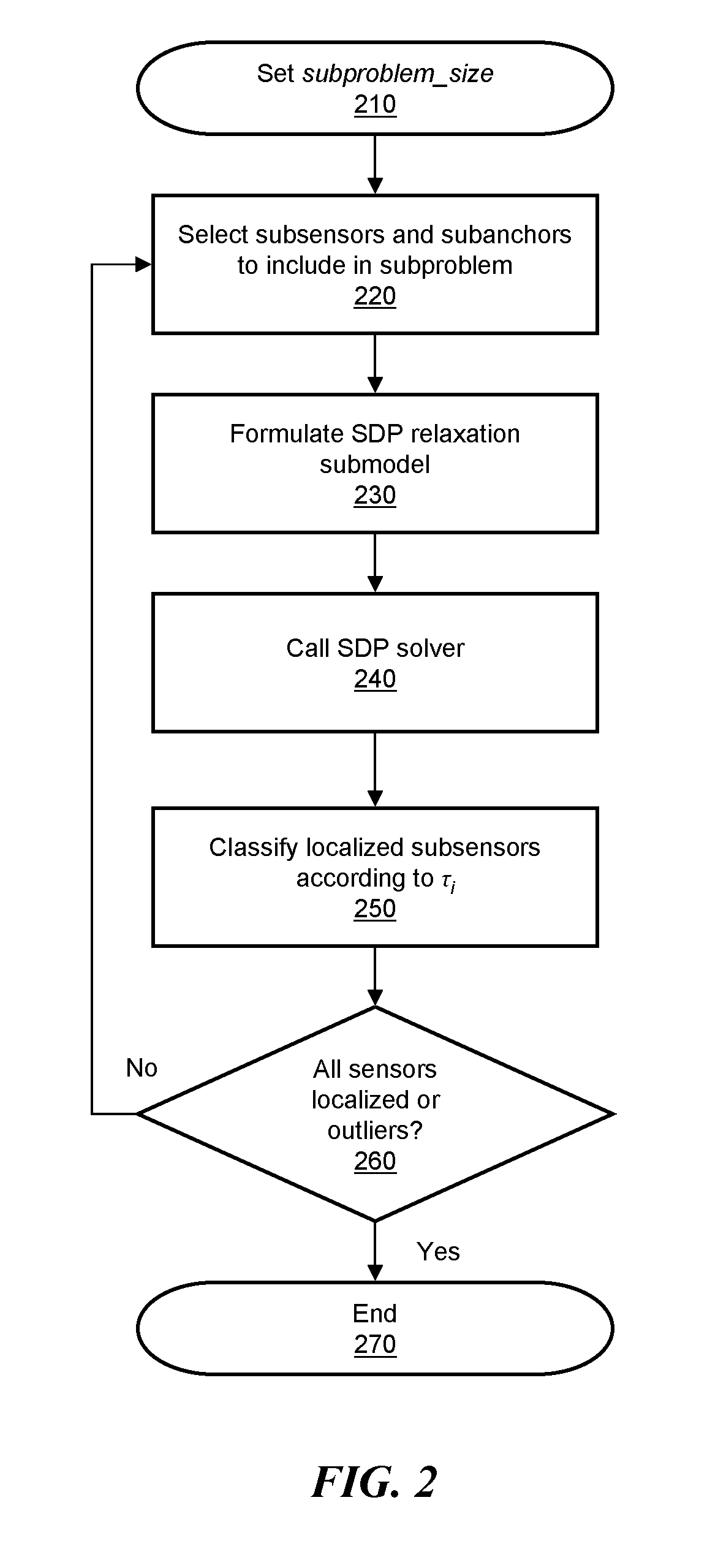Scalable sensor localization for wireless sensor networks
a wireless sensor and sensor network technology, applied in the field of node position determination in a network, can solve the problems of large, non-convex, difficult to scale, and the deployment cost of gps-based systems is typically high, and achieve the effect of minimizing the errors in the estimated sensor location
- Summary
- Abstract
- Description
- Claims
- Application Information
AI Technical Summary
Benefits of technology
Problems solved by technology
Method used
Image
Examples
Embodiment Construction
[0072]Reference is now made to FIG. 1, which depicts an indexing of s sensors and m anchors in a network. The total number of points, or nodes, n in the network is as follows:
n=s+m Eq. 1
[0073]The unknown points are s sensors, whose locations xi are determined as follows:
xiεR2, i=1, . . . , s Eq. 2
[0074]The known points are m anchors whose locations ak are known, as follows:
akεR2, k=s+1, . . . , n Eq. 3
[0075]Index k is specific for indexing anchors, as shown in FIG. 1.
[0076]The known distance measurements include the nonzero elements of a sparse matrix {circumflex over (d)} containing the readings of certain ranging devices for estimating the distance between two points, where {circumflex over (d)}ij is the distance measurement between two sensors xi and xj, wherein (iik is the distance measurement between a sensor xi and an anchor ak, wherein (i≦s
[0077]Distance measurements can include the distance information between two anchor points. Distance measurements can also include ...
PUM
 Login to View More
Login to View More Abstract
Description
Claims
Application Information
 Login to View More
Login to View More - R&D
- Intellectual Property
- Life Sciences
- Materials
- Tech Scout
- Unparalleled Data Quality
- Higher Quality Content
- 60% Fewer Hallucinations
Browse by: Latest US Patents, China's latest patents, Technical Efficacy Thesaurus, Application Domain, Technology Topic, Popular Technical Reports.
© 2025 PatSnap. All rights reserved.Legal|Privacy policy|Modern Slavery Act Transparency Statement|Sitemap|About US| Contact US: help@patsnap.com



